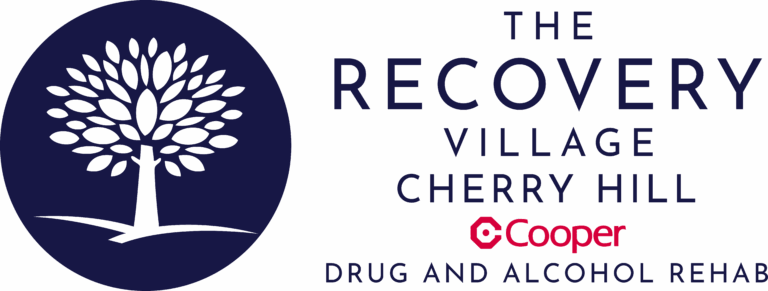Although sleeping pills are generally safe to take on their own, they can create a number of health risks when taken with alcohol.
Article at a glance:
– Sleeping pills, including prescription, over-the-counter, and herbal varieties, are commonly used to aid sleep but can be dangerous when mixed with other substances, especially alcohol.
– Alcohol and sleeping pills have sedating effects and when taken together, can increase the risk of side effects and potentially fatal overdose.
– Prescription sleeping pills like Ambien, Lunesta, Restoril, and Silenor should not be taken with alcohol due to the enhanced sedative effects and potential adverse reactions.
– Over-the-counter sleep aids, such as melatonin, diphenhydramine, doxylamine, and valerian root, can also have increased sedative effects and side effects when combined with alcohol.
– The length of time it takes for the body to metabolize alcohol varies, but it is recommended to wait until all alcohol has been cleared from the body before taking sleeping pills to avoid the risks and dangers associated with mixing the two substances.
– If struggling with alcohol and sleeping pill addiction, professional help is available through programs like medical detox and rehabilitation to overcome the addiction and learn skills for a sober life.
Sleeping pills, whether prescription, over-the-counter or herbal, are used to promote drowsiness in people who have trouble falling asleep and staying asleep. As of 2020, t around 8.2% of American adults reported taking medication to help them sleep every day or most days.
Unfortunately, sleeping pills carry some risks, especially when mixed with other drugs or alcohol. Mixing the wrong substance with a sleep aid can be dangerous or even deadly in some cases. It is important to know what effects drugs and alcohol can have when taken with sleeping pills.
Is It Dangerous To Mix Sleeping Pills and Alcohol?
Medications are typically safe when taken as directed by your healthcare provider. However, mixing certain prescription or over-the-counter medications with other sedating drugs can be dangerous. Since sleeping pills and alcohol have sedating effects, it is dangerous to take these substances together.
Recovery Can Be Life Changing
Whether you or a loved one is struggling with addiction, our expert team is here to guide you every step of the way. Don’t wait— reach out today to take the first step toward taking control of your life.
“My life has became something that I’m proud of and something I can be grateful for.“
– Joseph McDermott, The Recovery Village Cherry Hill Alumni
This includes:
- Prescription-only sleep aids like:
- Belsomra (suvorexant)
- Dayvigo (lemborexant)
- Doral (quazepam)
- Ambien (zolpidem)
- Estazolam
- Flurazepam
- Halcion (triazolam)
- Rozerem (ramelteon)
- Sonata (zaleplon)
- Lunesta (eszopiclone)
- Doxepin
- Trazodone
- Mirtazapine
- Temazepam
- Over-the-counter sleep aids like:
- Melatonin
- Diphenhydramine
- Doxylamine
- Valerian
Risks and Side Effects of Mixing Sleeping Pills and Alcohol
Alcohol, prescription sleeping pills and over-the-counter sleep aids are CNS depressants — substances that slow brain activity. When taken together, these medications have an additive effect that increases sedation and the risk of side effects. Mixing sleeping pills and alcohol can increase the risk of:
- Slowed breathing (respiratory depression)
- Increased sedation
- Falls and fractures
- Overdose
- Coma
- Permanent brain damage
- Death
The side effects of sleeping pills and alcohol are magnified when taken together. Even small amounts of alcohol can increase your risk of side effects like:
- Slurred speech
- Poor concentration
- Abnormal behavior
- Confusion
- Headache
- Lightheadedness
- Dizziness
- Dry mouth
- Problems with movement and memory
- Lowered blood pressure
- Slowed breathing
- Decreased oxygen to the brain (hypoxia)
Common Prescription Sleeping Pills Mixed With Alcohol
Taking prescription sleeping pills with alcohol can cause serious adverse effects. Both prescription sleeping pills and alcohol are sedating. When taken together, their side effects may be enhanced, which can lead to a potentially fatal sleeping pill overdose. The FDA requires manufacturers of sleeping pills like Ambien and Lunesta to issue warnings about the dangers of mixing sleep aids with alcohol.
Ambien and Alcohol
Ambien (zolpidem) is a prescription-only drug used to treat insomnia, a sleep disorder. It is a CNS depressant, meaning it slows brain activity. People who have trouble falling or staying asleep may take Ambien (zolpidem) to improve their sleep quality. You should not take Ambien with other CNS depressants, such as alcohol.
Lunesta and Alcohol
Lunesta (eszopiclone) is approved to treat insomnia in people who have trouble falling or staying asleep. It is available by prescription only from an authorized healthcare provider. Lunesta is a CNS depressant, so using it with other CNS depressants, such as alcohol, is dangerous. Mixing Lunesta and alcohol increases the sedative effects and side effects of Lunesta.
Temazepam and Alcohol
Restoril (temazepam) is a benzodiazepine approved for treating insomnia. Temazepam is prescribed by a healthcare provider for short-term use (about 7–10 days). Taking temazepam with other sedating substances, such as opioids or alcohol, can cause breathing problems, coma and death.
Doxepin and Alcohol
Silenor (doxepin) is prescribed to treat insomnia in people who have trouble staying asleep. Drinking alcohol with doxepin may increase the sedating effects of alcohol. Increased sedation from mixing alcohol and sleep aids like doxepin can cause breathing problems, coma or death.
Trazodone and Alcohol
Trazodone is a serotonin modulator, meaning it increases serotonin levels in the brain. The medication is approved to treat depression but is commonly prescribed to treat insomnia. Drinking alcohol with trazodone may increase its side effects.
Over-The-Counter Sleeping Aids and Alcohol
Over-the-counter sleep aids, including herbal products and dietary supplements, carry the same risks as prescription-only sleep aids when combined with alcohol. Combining alcohol with over-the-counter sleep aids increases these medications’ sedative effects and side effects.
Melatonin and Alcohol
Melatonin is a hormone the body naturally produces to regulate sleep. Melatonin derived from beef cattle or synthetically made is available over the counter as a dietary supplement for various sleep disorders. Melatonin is generally safe when used alone to improve sleep in people who have trouble falling or staying asleep.
Diphenhydramine and Alcohol
Diphenhydramine is an over-the-counter medication for treating several conditions, including itching, motion sickness and insomnia. Diphenhydramine is an antihistamine that easily crosses into the brain and results in drowsiness. Sleep aids containing diphenhydramine include:
- Advil PM
- Tylenol PM
- Aleve PM
- Nytol
- ZzzQuil
- Sominex
- Unisom SleepGels
Drinking alcohol while taking diphenhydramine may increase the sedative effects of alcohol. Side effects such as drowsiness, dizziness and slowed breathing may be more intense, and there is an increased risk of overdose. Drinking alcohol should be avoided while taking diphenhydramine.
Doxylamine and Alcohol
Doxylamine (Unisom SleepTabs) is an over-the-counter medication used for the short-term treatment of insomnia. Doxylamine is also an ingredient in several over-the-counter cold medications that control sneezing and runny nose. It is an antihistamine that binds to histamine receptors in the body and brain. Its effects on the brain cause drowsiness.
Valerian Root and Alcohol
Valerian root is an herb that promotes sleep and helps relieve anxiety. It is available as an over-the-counter dietary supplement as a sleep aid. Dietary supplements are not regulated as drugs, and few studies are available. Reported side effects include drowsiness, dizziness and headache. Side effects may be increased by drinking alcohol while taking valerian root.
How Long After Drinking Can You Take a Sleeping Pill?
No exact answer exists for how long you must wait to take a sleeping pill after drinking. The half-life of alcohol is four to five hours, the amount of time it takes your body to get rid of half the alcohol in your system. It can take up to five half-lives (20–25 hours) for your body to clear all the alcohol.
Many factors can affect how quickly your body metabolizes (breaks down) alcohol after drinking. Factors that affect the metabolism of alcohol include:
- The amount of alcohol you use
- How long you have been drinking
- The strength of your drinks
- Your weight and age
- Use of other medications
Alcohol increases side effects and sedation associated with all sleep aids, whether over-the-counter or prescription. There may also be lingering side effects while the body metabolizes alcohol after drinking. All prescription sleep aids carry a warning to avoid use with alcohol. To avoid the risks and dangers associated with drinking alcohol and taking sleeping pills, you should wait until your body has had time to rid itself of alcohol completely.
Treatment for Alcohol and Sleeping Pills Addiction
If you struggle with alcohol and sleeping pills, the thought of overcoming your addiction alone can be overwhelming. But help is available. At The Recovery Village Cherry Hill at Cooper, we believe in treating your addiction to alcohol and sleeping pills at the same time. Our medical detox program can help you overcome your addiction, while our rehab program can teach you the skills you’ll need for an alcohol and sleeping pill-free life. Don’t wait: contact us today to learn more.










